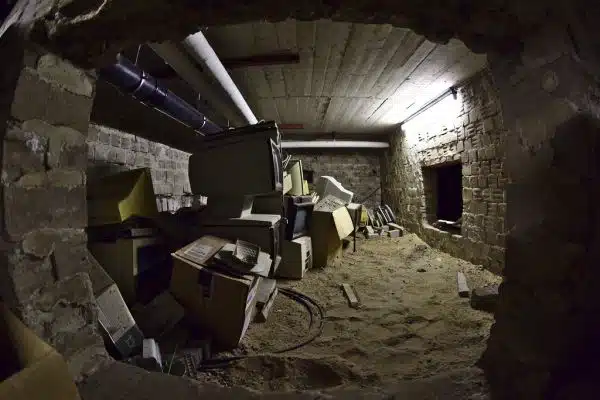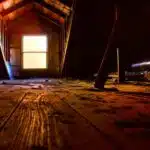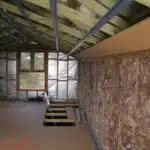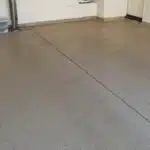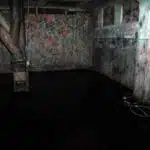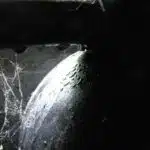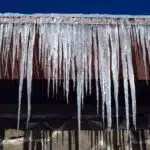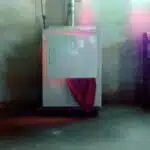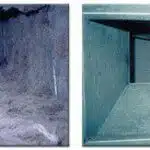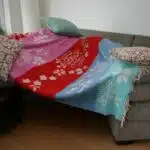Crawl spaces are often the neglected areas of a home, yet they play an important role in maintaining the overall condition of the property. An uninsulated crawl space can lead to various problems such as mold growth, water damage, and energy loss. Proper insulation of a crawl space can help homeowners save energy costs and prevent potential damage to their home.
Insulating a crawl space may seem like a daunting task, but with the right knowledge and tools, it can be done effectively. The key to insulating a crawl space is to create a barrier between the outside environment and the interior of the home. This article will provide step-by-step instructions on how to properly insulate a crawl space using different methods and materials. By following these guidelines, homeowners can ensure that their crawl spaces are well-insulated, resulting in increased comfort levels and lower energy bills.
Understanding The Importance Of Crawl Space Insulation
It is crucial to understand the importance of crawl space insulation for any homeowner. Crawl spaces in homes are notorious for being damp, dark, and harboring pests, which can lead to various problems. Insulating your crawl space can help prevent these issues from occurring by regulating moisture levels and creating a barrier that keeps pests out. Additionally, proper insulation can also improve indoor air quality and reduce energy bills.
Aside from its protective benefits, crawl space insulation also has numerous advantages. One of the most significant benefits is that it helps maintain a comfortable temperature inside your home. During the winter months, uninsulated crawl spaces can make floors cold and drafty, leading to higher heating costs. Alternatively, during summer months, an insulated crawl space helps keep homes cooler by preventing hot air from seeping through the floorboards. This type of insulation also helps protect against mold growth and improves overall energy efficiency.
It’s essential to recognize the significance of crawl space insulation because it not only provides protection but also has many other benefits that homeowners may not realize. By insulating your crawl space correctly, you will enjoy increased comfort in your home while saving money on energy bills. In the next section, we will assess how to determine if your home needs this type of insulation based on specific factors such as location and climate conditions.
Assessing Your Crawl Space For Insulation Needs
When assessing a crawl space for insulation needs, it is important to consider factors such as the size of the space, the climate, and the insulation materials available.
Additionally, the R-value of the insulation should be taken into account in order to determine how much insulation is needed to achieve the desired temperature and energy efficiency.
Homeowners should also consider the type of insulation intended for the area, such as fiberglass, foam board, or spray foam insulation.
All of these factors should be weighed carefully in order to determine the most effective and efficient insulation solution for the crawl space.
Factors To Consider
When considering insulation options for your crawl space, there are several factors that need to be taken into account. Cost considerations will play a significant role in your decision-making process. Installing insulation in a crawl space can be an expensive undertaking, so it’s essential to determine if the benefits outweigh the costs. Additionally, you’ll want to consider if you’re going to do the job yourself or hire professionals. DIY options are less expensive but require more time and effort on your part.
Another factor to consider is the type of insulation that works best for your particular situation. Crawl spaces come in different shapes and sizes, and each requires unique insulation solutions. For example, fiberglass batts may work well in some instances, while spray foam may be more effective in others. It’s important to understand the pros and cons of each type before making a final decision.
Lastly, you’ll want to assess any potential hazards present in your crawl space before insulating it. Mold growth is common in damp environments like crawl spaces, so it’s crucial to address any moisture issues before installing insulation. Additionally, pests like rodents and insects can cause damage to both the insulation and the structure of your home if not dealt with properly.
Cost considerations and DIY options are just two factors that should be taken into account when assessing your crawl space for insulation needs. Understanding what type of insulation works best for your specific situation and addressing potential hazards beforehand will ensure that your new insulation is as effective as possible.
Determining Insulation Requirements
When it comes to assessing your crawl space for insulation needs, determining the amount of insulation required is crucial. Calculating requirements will help you plan a budget and ensure that you install enough insulation to provide adequate coverage. The amount of insulation needed depends on several factors such as the size and shape of the crawl space, the type of insulation, and your climate zone.
To determine your insulation requirements accurately, you need to measure the area of your crawl space. Once you have this information, you can use online calculators or consult with a professional to determine the appropriate R-value (a measure of thermal resistance) for your area. This value takes into account factors like temperature fluctuations in your region, so it’s essential to choose the right one for optimal energy efficiency.
Budget planning is also an important consideration when determining insulation requirements. Depending on the type and amount of insulation needed, costs can vary significantly. It’s crucial to factor in all expenses associated with installation, including materials and labor if hiring professionals. While DIY options may be less expensive, it’s important to weigh the benefits against potential risks like improper installation or exposure to hazardous substances like asbestos.
Determining insulation requirements is an essential step in assessing your crawl space for insulation needs. By measuring the area and choosing an appropriate R-value while considering budget planning, you can ensure that your new insulation provides maximum benefits while minimizing costs. With proper planning and careful consideration of all factors involved, insulating your crawl space can be a beneficial investment in both energy efficiency and overall home comfort.
Choosing The Right Insulation Method For Your Home
Once you have assessed your crawl space for insulation needs, the next step is to choose the right insulation method for your home. This decision can be influenced by a variety of factors such as budget, climate, and personal preference. One of the biggest decisions you will face is whether to tackle this project yourself or hire a professional.
DIY vs. Professional: Insulating your crawl space can be a time-consuming and physically demanding task that requires attention to detail. While DIY methods may save you money in the short term, it is important to consider the long-term benefits of hiring a professional. Professionals bring expertise and experience to ensure that the job is done correctly and efficiently. Additionally, if something goes wrong during installation, professionals are typically insured against damages.
Cost-effective options: There are several cost-effective insulation options available for crawl spaces that can provide significant energy savings in the long run. One popular option is spray foam insulation which creates an air-tight seal preventing moisture and air from entering your home while also reducing energy costs. Another cost-effective option is fiberglass batts which are easy to install but require additional measures such as sealing gaps and cracks to prevent air leaks.
- Consider hiring a professional for expert knowledge and efficient installation.
- Research cost-effective options such as spray foam insulation or fiberglass batts.
- Factor in long-term energy savings when making insulation decisions.
- Don’t forget about sealing gaps and cracks to prevent air leaks.
When it comes to insulating your crawl space, there are many types of insulation materials available on the market today. Each type has its advantages and disadvantages depending on various factors such as R-value (insulation effectiveness), durability, moisture resistance, and cost-effectiveness. In the next section, we will explore some of the most common types of insulation materials used for crawl spaces including foam board, spray foam, fiberglass batts, and cellulose insulation materials. By understanding each material’s unique features, you can make an informed decision about which type of insulation is right for your crawl space.
Types Of Insulation Materials For Crawl Spaces
When it comes to insulating a crawl space, choosing the right type of insulation material is crucial. Two popular options for crawl space insulation are fiberglass and foam. Both have their advantages and disadvantages, and it’s important to consider factors such as cost, effectiveness, and ease of installation before making a decision.
Fiberglass insulation is a common choice for crawl spaces due to its affordability. It comes in batts or rolls that can be easily cut to fit between joists or around pipes and electrical wiring. Fiberglass does have some drawbacks, however. It can sag over time if not installed properly, which reduces its effectiveness. Additionally, fiberglass does not provide an air barrier like foam insulation does, which means it may not be the best choice for extremely cold climates.
Foam insulation is another option for crawl spaces that offers several benefits over fiberglass. It provides an air barrier that helps prevent drafts and keeps your home more comfortable year-round. Foam also has a higher R-value than fiberglass, meaning it provides better thermal resistance per inch of thickness. However, foam insulation typically costs more than fiberglass upfront.
To further assist in weighing the pros and cons of each type of insulation material for your crawl space project, here’s a table comparing the cost per square foot for both options:
| Insulation Material | Cost per Square Foot |
|---|---|
| Fiberglass | $0.50-$1 |
| Foam | $1-$2 |
Ultimately, the decision between fiberglass and foam insulation for your crawl space will depend on your specific needs and budget. Consider consulting with a professional home insulation expert to determine which option is best for you before beginning your project.
Moving forward with preparing your crawl space for insulation requires careful planning and implementation to ensure optimal results.
Preparing Your Crawl Space For Insulation
Before insulating your crawl space, it is essential to prepare the area. Proper preparation ensures that the insulation will work efficiently and effectively. Here is a preparing checklist that can help you get started:
- Clean out the crawl space: Remove any debris or clutter from the crawl space. This includes old insulation, rocks, and dirt.
- Seal off any air leaks: It is essential to seal off any air leaks in your foundation walls or rim joists. Use spray foam or caulk to fill gaps around pipes, wires, and vents.
- Inspect for moisture problems: Check for signs of moisture damage such as mold or water stains. Addressing these issues before insulating will prevent future problems.
- Install a vapor barrier: A vapor barrier helps prevent moisture from entering into your crawl space.
One of the most common mistakes homeowners make when preparing their crawl space for insulation is not addressing moisture issues. Moisture can cause significant damage to insulation materials and lead to mold growth. Another mistake is not sealing off air leaks properly. Any openings can allow cold air to enter during winter months and warm air during summer months, decreasing the efficiency of your insulation.
Properly preparing your crawl space before insulating it ensures that you will have long-lasting results. By following this checklist and avoiding common mistakes, you can ensure that your investment in insulation pays off in energy savings and increased comfort levels in your home. In the next section, we will discuss how to install a vapor barrier in your crawl space for maximum effectiveness.
Installing Vapor Barrier In Your Crawl Space
Once you’ve prepared your crawl space for insulation, it’s time to move on to installing a vapor barrier. This step is crucial in preventing moisture from seeping into your insulation and causing damage to your home. While the traditional method of using a plastic sheet as a vapor barrier is effective, there are alternative materials that can be used.
One alternative to traditional plastic sheeting is foil-faced bubble wrap. This material consists of two layers of reflective foil with a layer of air bubbles sandwiched in between. Foil-faced bubble wrap provides an effective moisture barrier while also reflecting heat back into your crawl space, making it a great option for homes in colder climates. Another alternative is spray foam insulation which not only acts as a vapor barrier but also seals air leaks.
If you’re considering installing a vapor barrier on your own, there are some tips to keep in mind. First, make sure to measure the area accurately and purchase enough material to cover the entire crawl space. It’s also important to properly seal all seams and overlaps to prevent any moisture from leaking through. Additionally, when choosing between different materials, consider factors such as cost, durability, and effectiveness.
Incorporating an effective vapor barrier into your crawl space insulation can greatly improve the energy efficiency of your home while also protecting against moisture damage. However, it’s important not to forget about sealing air leaks in your crawl space which will further improve its energy efficiency and protect against unwanted pests and allergens. In the next section, we’ll discuss different methods for sealing air leaks that may be present in your crawl space.
Sealing Air Leaks In Your Crawl Space
- Sealing doorways in a crawl space can be achieved by using weatherstripping and door sweeps to prevent air from entering or leaving the space.
- Additionally, caulk can be used to fill any gaps or cracks around window frames and door frames.
- Properly sealing the ventilation system in the crawl space is essential for maintaining a comfortable indoor environment.
- This can be done by using a combination of insulation and weatherizing techniques to reduce air infiltration from the outside.
Sealing Doorways
To effectively seal air leaks in a crawl space, it is important to pay attention to the doorways. Weather stripping and threshold installation are key elements in sealing these openings. Weather stripping should be applied around the edges of the doorway to prevent air from entering or escaping. Thresholds can be installed at the base of the door to prevent drafts and decrease energy loss.
When selecting weather stripping for your crawl space doorway, it is important to choose a durable material that will withstand wear and tear. Rubber, vinyl, or foam weather stripping are all good options. It is also important to ensure that the weather stripping fits snugly against the doorway to create an effective seal. Thresholds should also be selected with durability in mind and should fit tightly against the base of the door.
The process of installing weather stripping and thresholds is relatively simple but requires attention to detail. Before beginning, ensure that the doorway is clean and free of debris. Measure carefully before cutting weather stripping or thresholds to size. Finally, take care when applying adhesive as it can be messy and difficult to remove if mistakes are made. By sealing doorways in your crawl space with weather stripping and thresholds, you can reduce energy loss and improve indoor air quality without breaking the bank.
Ventilation System Sealing
Ventilation system maintenance is an integral part of any crawl space upkeep routine. Proper ventilation ensures that the air in your crawl space remains healthy and free from mold and mildew growth. However, a poorly maintained ventilation system can lead to several common ventilation system problems, such as drafts, moisture buildup, and pest infestations. These issues can result in energy loss and decreased indoor air quality.
One way to combat these problems is by sealing air leaks in your crawl space’s ventilation system. By properly sealing the vents and ductwork, you can prevent unwanted airflow from entering or escaping your home. This will not only improve the efficiency of your HVAC system but also enhance the overall air quality in your living spaces.
To seal air leaks in your crawl space’s ventilation system, start by inspecting the vents and ducts for any obvious signs of damage or deterioration. Common areas to check include joints, seams, and connections between different parts of the system. Once you have identified any problem areas, use foil tape or mastic sealant to create an airtight seal around them. In some cases, it may also be necessary to install insulation around the ductwork to prevent condensation buildup. With proper ventilation system maintenance and sealing techniques, you can ensure that your crawl space remains clean and healthy for years to come.
Insulating Crawl Space Walls
Insulating crawl space walls is an essential part of insulating your home. A well-insulated crawl space can help to reduce energy bills, improve indoor air quality, and prevent moisture problems. Moisture is a significant concern when insulating a crawl space, as it can lead to mold growth and structural damage.
One option for insulating crawl space walls is to use exterior insulation. This involves adding insulation to the outside of the foundation walls. Exterior insulation options include rigid foam boards, spray foam insulation, or insulated concrete forms. Exterior insulation can be more effective than interior insulation because it helps to reduce thermal bridging and keeps the foundation walls warm.
Another option for insulating crawl space walls is to use vapor barriers or moisture-resistant materials such as fiberglass batts or spray foam insulation. These materials can help prevent moisture from entering the crawl space by creating a barrier between the interior and exterior spaces. However, it’s important to note that if there are existing moisture issues in the crawl space, these materials may not be enough on their own.
In summary, insulating crawl space walls is critical for creating an energy-efficient and comfortable home. When choosing an insulation method, homeowners should consider the presence of crawl space moisture and exterior insulation options like rigid foam boards or spray foam insulation. By properly insulating your crawl space walls, you’ll be taking an important step towards improving your home’s comfort and energy efficiency. In the next section, we will discuss how to insulate crawl space floors using various methods that are both effective and cost-efficient.
Insulating Crawl Space Floors
For homeowners, insulating a crawl space is an essential part of home maintenance. A poorly insulated crawl space can cause many issues such as high energy bills, mold growth, and pest infestations. In this section, we will discuss the benefits of insulating crawl space floors and moisture prevention techniques.
Let’s take the example of a homeowner who noticed a significant increase in their energy bills during colder months. Upon inspection, they found that their crawl space was not insulated properly. Insulating the floor above the crawl space can help reduce energy costs by preventing heat from escaping through the floorboards.
Here are some benefits of insulating your crawl space floors:
- Improved Energy Efficiency: Insulation helps regulate temperature throughout your home, leading to lower energy bills.
- Increased Comfort: Insulation helps maintain a consistent temperature throughout your home by preventing cold air from entering through the floor.
- Noise Reduction: Properly installed insulation can help reduce noise levels in your home.
Moisture prevention techniques are also crucial when insulating a crawl space floor. Excessive moisture can lead to mold growth and wood rot, which could damage your home’s structure. Moisture prevention techniques include installing vapor barriers and sealing any cracks or gaps in your crawlspace walls.
With proper insulation and moisture prevention techniques in place, you can improve your home’s overall comfort level while increasing its value. In the next section, we will discuss how to install insulation batts in your crawl space for optimal results.
Installing Insulation Batts In Your Crawl Space
Insulating the floors of your crawl space is an essential step in ensuring the overall energy efficiency of your home. However, it’s not enough to rely on floor insulation alone. The walls and ceiling of your crawl space should also be insulated to maximize its effectiveness. This section will cover how to use insulation batts for insulating the walls and ceiling of your crawl space.
Cost considerations are a significant factor when deciding on the type of insulation to use in your crawl space. While some materials may be more expensive than others initially, they may save you money in the long run due to their superior insulation properties. Insulation batts are a popular choice because they are affordable and effective at keeping your home energy-efficient.
Health benefits are another consideration when insulating your crawl space. Proper insulation can prevent moisture from seeping into your home, which can lead to mold growth and poor indoor air quality. By using high-quality insulation materials like fiberglass or mineral wool batts, you can ensure that your home stays dry and healthy for you and your family.
As an expert in home insulation, I recommend using spray foam insulation for crawl spaces as it provides superior coverage compared to traditional batts or rolls. Spray foam expands after application, filling every nook and cranny in the crawl space area, creating an airtight barrier against moisture and air leaks. It also has excellent thermal insulating properties that help keep your home comfortable year-round while reducing energy bills. Consider hiring a professional contractor who specializes in spray foam installation for optimal results.
Spray Foam Insulation For Crawl Spaces
Picture this: a crawl space below your home that is damp, cold, and filled with pests. This may seem like a nightmare to some homeowners, but it’s a reality for many. Fortunately, there is a solution – spray foam insulation.
Spray foam insulation has become increasingly popular over the years due to its many benefits. First and foremost, spray foam provides an air-tight seal that helps keep moisture out of your crawl space. This is important because excess moisture can lead to mold growth and wood rot, which can compromise the structural integrity of your home. Additionally, spray foam insulation helps regulate temperature by keeping warm air inside during the winter months and cool air inside during the summer months.
When considering crawl space insulation options, cost is always a factor. While spray foam insulation may be more expensive upfront than traditional fiberglass or cellulose insulation, it can provide long-term savings on energy bills due to its superior insulating properties. It’s also worth noting that spray foam insulation typically lasts longer than other types of insulation, meaning you won’t have to replace it as often.
To emphasize the benefits of spray foam insulation even further, here are three sub-points:
- Spray foam reduces the likelihood of pest infestations by sealing off entry points.
- Spray foam can improve indoor air quality by reducing allergens and pollutants.
- Spray foam installation is quick and easy compared to other types of insulation.
In conclusion, if you’re looking for an effective way to insulate your crawl space and protect your home from moisture damage and temperature fluctuations, consider spray foam insulation. While it may come with a higher initial cost than other options, the long-term benefits make it worth considering in any cost comparison analysis between various options available in the market today. In our next section we will discuss whether DIY or professional installation is the best choice for your specific situation when insulating your crawl space.
Diy Vs. Professional Crawl Space Insulation
When it comes to insulating your crawl space, you have two options: DIY crawl space insulation or hiring a professional. The decision between the two depends on several factors such as your budget, the size of your crawl space, and your insulation knowledge and skills.
DIY crawl space insulation is a common choice for homeowners who want to save money. With numerous tutorials available online, it’s easy to find step-by-step guides on how to install the insulation yourself. However, keep in mind that installing insulation requires some level of expertise and experience. If not done correctly, it can lead to poor insulation performance and even pose health hazards due to the potential for mold growth.
On the other hand, hiring a professional ensures that your crawl space is insulated correctly from start to finish. Professionals have the necessary knowledge and tools required for proper installation. They also know the right materials that suit your specific needs and will take care of any issues that may arise during installation. Although it may cost more upfront than a DIY project, it saves you time and effort while ensuring long-lasting results.
Transition:
Now that you’ve decided whether you’ll do it yourself or hire a professional for your crawl space insulation project, let’s move on to discuss how maintaining your insulation can extend its lifespan and improve energy efficiency.
Maintaining Your Crawl Space Insulation
Now that you have insulated your crawl space, it is important to maintain it properly. Assessing ventilation and maintaining moisture control are crucial for the longevity and effectiveness of your insulation. Ventilation helps to prevent moisture buildup, which can lead to mold growth and wood rot. Moisture control also aids in preventing insects and rodents from entering your crawl space.
Here are some tips to help you maintain your crawl space insulation:
- Check for water leaks: Make sure there are no leaks in your plumbing system or foundation walls that could cause water intrusion.
- Monitor humidity levels: Keep humidity levels below 60% to prevent mold growth.
- Seal air leaks: Inspect your crawl space regularly for any gaps or holes that could let outside air in.
- Remove debris: Clear out any debris or clutter in your crawl space that could trap moisture.
By following these maintenance tips, you can ensure that your insulation is working effectively and efficiently. Properly maintained insulation can save you money on energy bills and improve the overall comfort of your home by keeping cold drafts out.
Transitioning into the next section, insulating your crawl space not only provides comfort and energy savings but also offers a range of other benefits that homeowners should consider.
Benefits Of Insulating Your Crawl Space
Insulating your crawl space can provide a range of benefits, from energy savings to moisture control. By insulating the crawl space, you can reduce the amount of energy needed to heat and cool your home. This is because insulation helps to keep the temperature stable in your crawl space, which in turn reduces the workload on your heating and cooling systems.
Another benefit of insulating your crawl space is moisture control. Without proper insulation, moisture from the ground can seep into your home through the crawl space. This can lead to problems such as mold growth and structural damage. By insulating your crawl space, you can create a barrier that prevents moisture from entering your home.
To better understand the benefits of insulating your crawl space, take a look at this table:
| Benefits | Energy Savings | Moisture Control |
|---|---|---|
| Description | Insulation keeps temperature stable, reducing workload on heating/cooling systems | Creates barrier to prevent moisture from entering home |
| Result | Lower energy bills | Prevents mold growth and structural damage |
Overall, insulating your crawl space is a smart investment that can help you save money on energy bills while also protecting your home from potential moisture-related problems. In the next section, we will address some frequently asked questions about crawl space insulation to help you make an informed decision about whether or not it is right for you.
Frequently Asked Questions About Crawl Space Insulation
Now that you understand the benefits of insulating your crawl space, it’s time to address some frequently asked questions about crawl space insulation. One of the most common questions people ask is how much it will cost to insulate their crawl space. The cost of crawl space insulation can vary depending on the size and complexity of your crawl space, as well as the type of insulation you choose. However, on average, homeowners can expect to spend between $1,500 and $5,000 for a professional installation.
If you’re looking to save money on your crawl space insulation project, there are several DIY tips you can follow. First and foremost, make sure to seal any air leaks or cracks in your crawl space walls and floors before installing insulation. This will help ensure that your insulation is effective at keeping out moisture and maintaining consistent temperatures. Additionally, consider using spray foam insulation or rigid foam board insulation for maximum efficiency.
Another important consideration when insulating your crawl space is ventilation. While it may seem counterintuitive, proper ventilation is essential for preventing mold growth and ensuring healthy indoor air quality in your home. Make sure your crawl space has adequate vents installed around its perimeter and that they are free from obstruction. Additionally, consider installing a dehumidifier in your crawl space to help regulate moisture levels.
In summary, insulating your crawl space can provide numerous benefits for both your home’s energy efficiency and indoor comfort. While professional installations can be costly, there are many DIY tips that homeowners can use to save money while still achieving effective results. By addressing any air leaks or cracks in your crawl space walls and floors, choosing the right type of insulation for your needs, ensuring proper ventilation, and possibly even investing in a dehumidifier system – you’ll have everything needed for an efficient crawlspace!
Conclusion
Crawl space insulation is an important component of home insulation that can have a significant impact on energy efficiency, indoor air quality, and overall comfort. Assessing your crawl space for insulation needs, choosing the right insulation method and materials, and properly preparing your crawl space are all crucial steps in ensuring your insulation project is successful.
While some homeowners may choose to tackle crawl space insulation as a DIY project, it’s important to consider the potential challenges and risks involved. Hiring a professional to handle the installation can save time and ensure proper installation techniques are used.
One common objection to crawl space insulation is the cost. However, investing in high-quality insulation can ultimately save homeowners money on energy bills in the long run. Additionally, improved indoor air quality and increased home comfort are invaluable benefits that make crawl space insulation a worthwhile investment for any homeowner looking to improve their home’s energy efficiency. As a home insulation expert, I highly recommend prioritizing crawl space insulation as a key aspect of any home improvement plan.
Image Credits
- “Crawling Space” by dvanzuijlekom (featured)

